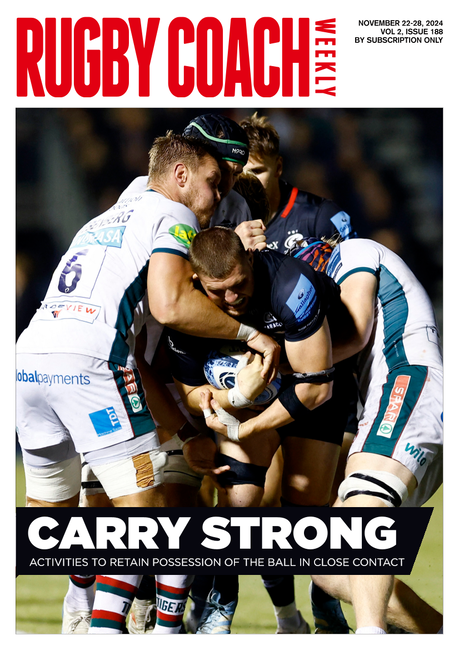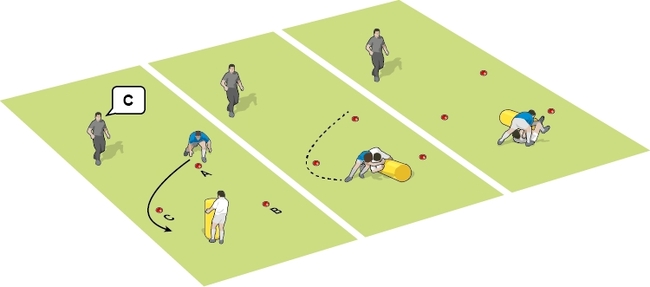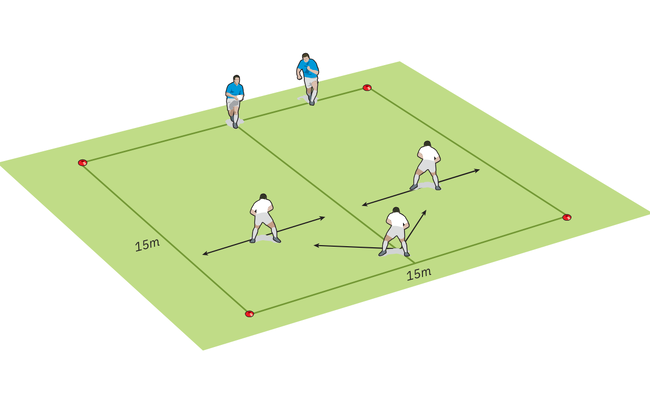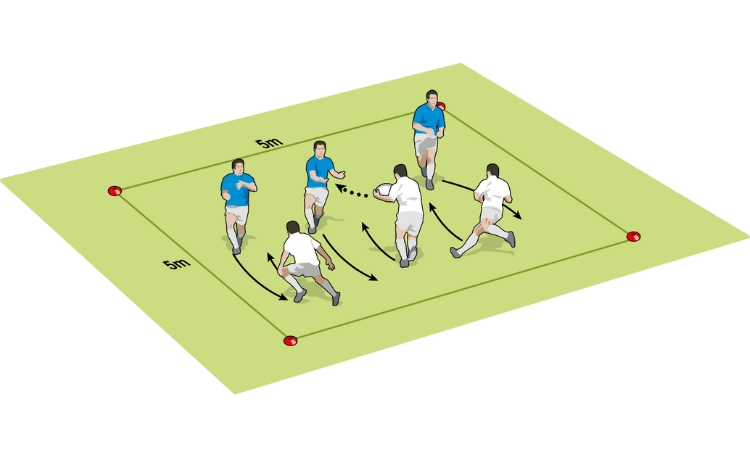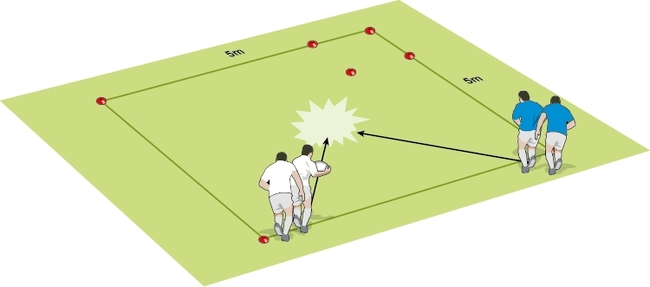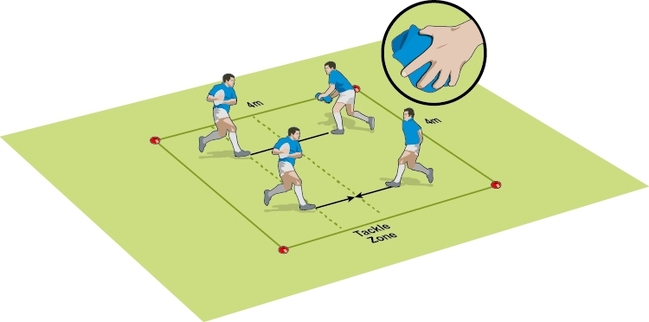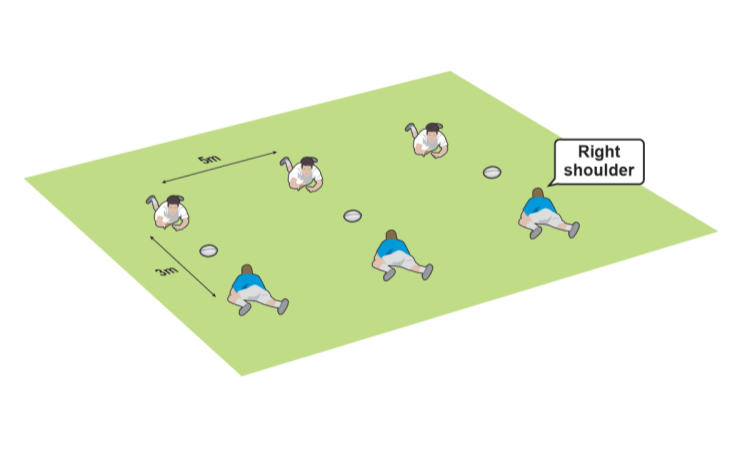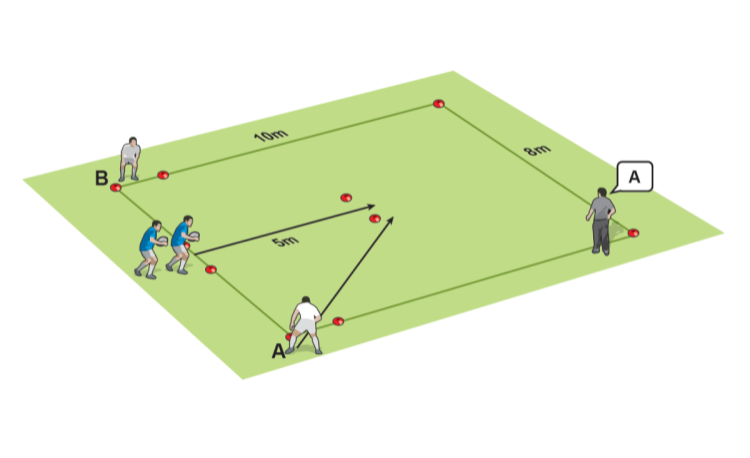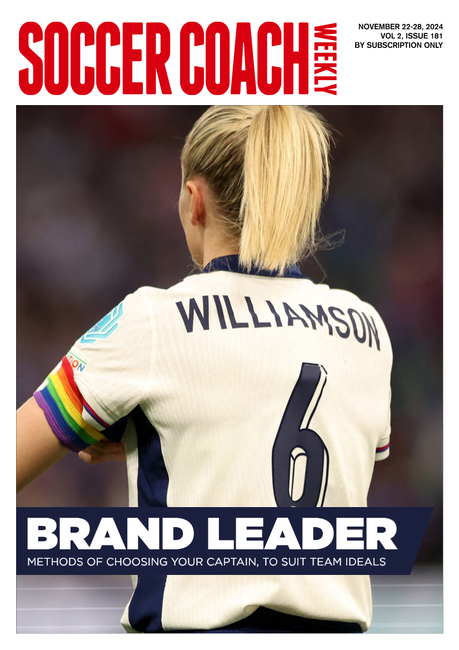Coaching tips to get your rugby players tackling more effectively
"All players should be able to tackle hard." This is not true. Tackling has an important role to play, but you cannot win games by just tackling and therefore you may need to have players who may not be as defensively "hard" as others. Johnny Wilkinson is unusual in the number 10 channel at international rugby. In fact, most international sides will have a less defensively strong
fly half.
Tackling is not just about bringing a player to ground. It is a multifaceted action which requires different techniques in different situations with different players. Hence rugby tackling drills and training practices need to have as much variety as passing drills.
Physical strength is not the key to tackling. Good tackling requires a balance of mental strength, technique and physical ability. There are naturally some better tacklers, but, like most things in life, better tackling can be taught. It takes patience and good understanding of how to create the right circumstances for all the players.
Rugby drills need not be a chore
Creating the right atmosphere in training helps make tackling drills seem less like a chore. Rugby drills and practices need to be set up in such a way that weaker tacklers are not in a situation where they may be embarrassed. It may seem perverse not to put them under pressure. After all, how are they supposed to make the big tackle in the game if they are not exposed to similar circumstances in the game?
However, I like to draw an analogy with goal kickers with a poor run of kicking form, because we all know how easy it is to knock a player who is not kicking well. Poor confidence tightens the mind and body, further reducing the likelihood of achieving success, the kick. The same is true for a weak tackler. Build their confidence, don’t destroy it.
Phil Larder, the former England defence coach, talks about the positive attitude defenders must have. Terms such as "fear" and "injury" do not help develop the right frame of mind. Health and safety are important to emphasise, but it is better to say "a good head position will ensure you land on top of the player", than "if you put your head here, you might get knocked out".
Better Rugby Coaching tackling guide
This guide puts players into the category that most suits them. The aim is to move the players into the "hard, terrific tackler" category.
The "hard" tackling player
- Bad technique = terrifying tackler
- Flies into tackles without fear.
- Little understanding of what needs to be done to achieve a good tackle.
- Can be effective, but also dangerous. Likely to be involved in injuries - theirs and others.
- Can miss tackles because of poor technique, but not lack of effort.
- Good technique = terrific tackler
- The best sort of tackler.
- Uses the right technique to maximum effect. Looks to make tackles happen.
- Imposes themselves physically in the tackle.
- Rarely misses tackles.
The "soft" tackling player
- Bad technique = terrified tackler
- Timid and avoids tackles.
- When has to make a tackle, has little or no concept of what to do.
- A danger to themselves.
- Can miss tackles because of poor technique, but not lack of effort.
- Good technique = tactical tackler
- Does not have a bad technique.
- Is not keen on making tackles.
- Will only make a tackle as a last resort.
- Can sometimes be fired up in a big game, however.
A key rugby coaching tip is to split the groups to enhance their individual needs, rather than lump them all together. Recognising where players are in the guide will enable you to differentiate your training drills more effectively. "TERRIFYING" tacklers could usefully spend more time on their technique, "TACTICALS" on their confidence and "TERRIFIEDS" on their remedial work.
Rugby drill tips for remedial tacklers
Here are some rugby coaching drill tips to give the "TERRIFIEDS" some confidence.
- The ball carrier runs backwards. The tackler has to chase and put them on the ground. Develop this by making the ball carrier walk backwards and stand still. Then with the ball carrier moving forward.
- In the same rugby drill, move from tackle shield standing, to tackle shield moving, to ball carrier standing, to ball carrier moving.
- Put a piece of tape on the shoulder of the tackler. This is what they need to focus on when hitting the target. Then put a piece of tape on the shorts of the ball carrier. This is the target. This might be difficult in wet weather when the tape can fall off, but the pressure of putting the tape onto the hitting point works in the mind of the tackler.
- It's a good rugby coaching tip to make sure the player tackles with both shoulders during a practice drill. A common-sense statement, but something often overlooked.
Newsletter Sign Up
Coaches Testimonials

Gerald Kearney, Downtown Las Vegas Soccer Club

Paul Butler, Florida, USA

Rick Shields, Springboro, USA

Tony Green, Pierrefonds Titans, Quebec, Canada
Subscribe Today
Be a more effective, more successful rugby coach
In a recent survey 89% of subscribers said Rugby Coach Weekly makes them more confident, 91% said Rugby Coach Weekly makes them a more effective coach and 93% said Rugby Coach Weekly makes them more inspired.
Get Weekly Inspiration
All the latest techniques and approaches
Rugby Coach Weekly offers proven and easy to use rugby drills, coaching sessions, practice plans, small-sided games, warm-ups, training tips and advice.
We've been at the cutting edge of rugby coaching since we launched in 2005, creating resources for the grassroots youth coach, following best practice from around the world and insights from the professional game.


